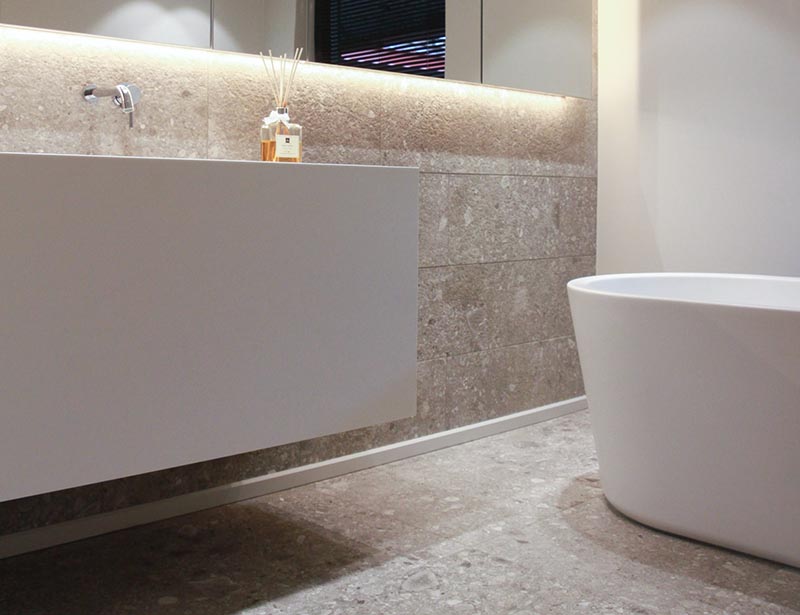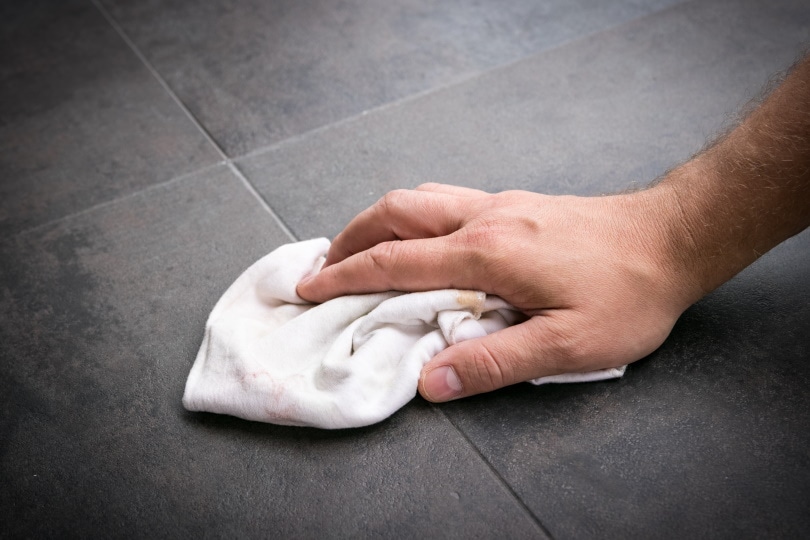Can You Use Wall Tile on the Floor? Important Construction Facts
-
Ed Malaker
- Last updated:

Adding a tile floor is a big job, and purchasing new tiles can be expensive. If you have old tile lying around, it can be tempting to use it. However, if the product that you hope to use is wall tile, it’s unlikely to be a good idea to use it for the floor. Keep reading as we explain why you shouldn’t use wall tile for flooring and what problems can arise.
Can I Use Wall Tile on My Floor?
Durability
The primary reason you shouldn’t use wall tiles on the floor is that they are not durable enough. They are thinner than floor tiles because they don’t need to put up with the stress of people walking on them, so builders can cut costs without sacrificing durability. Installing wall tiles on the floor of a high-traffic area might quickly lead to broken and cracked tiles that you will need to replace.
Gloss
One of the problems with using wall tiles on the floor is that they often have a high gloss that helps them look nice while making them waterproof. However, this gloss will also create a slippery surface if it gets wet.
Water Resistance
Another thing that can affect a tile’s usefulness on the floor is its ability to hold up in a wet environment. While tile walls can often get wet without a problem, the water doesn’t sit on them like it can on the floor, and some tiles will break down if there is too much moisture.

How Can I Tell If a Tile Is Suitable for the Floor?
PEI Rating
Most tiles will have a Porcelain Enamel Institute (PEI) rating stamped into them. This rating indicates its resistance to debris and moisture and is a good indicator of whether you can use it on the floor.
PEI–0
Tiles with a PEI rating of 0 are only suitable as wall tiles. The only place where one of these tiles might be suitable as a floor tile is in an area of the home with only extremely light traffic, like a closet.
PEI–1
Tiles with a PEI rating of 1 are still not great for a floor, but you can use them in light-traffic areas of the home that don’t have access to the outside, where people typically don’t wear shoes, like a bedroom or bathroom. These tiles also make great wall tiles for areas like the shower.
PEI–2
Tiles with a PEI rating of 2 are common for floor tiles in residential homes that might see regular footwear.

PEI–3
Tiles with a PEI rating of 3 are great for rooms in residential homes with a large amount of foot traffic, and they are particularly ideal for rooms that lead outdoors, since visitors could bring in rocks or other items that might crack tile with a lower rating.
PEI–4
Tiles with a PEI rating of 4 are high quality and suitable for use in the floor of residential buildings. You will also find PEI–4-grade tiles in many commercial buildings, like restaurants, hotels, department stores, etc. It’s also a popular choice for rooms leading to the outdoors.
PEI–5
Tiles with a PEI of 5 are the highest quality. Choose these tiles for use in the swimming pool, public building entrance, or a high-traffic area for extreme durability.
Conclusion
Unfortunately, you shouldn’t use wall tile on the floor because it will likely crack under the pressure of people walking on it, unless it’s in a very low-traffic area, like a closet. Repairing broken tiles is annoying and expensive, so select a floor tile with a PEI rating that’s suitable for the amount of traffic that the floor will receive. Tile rated 2 or 3 is likely the best for most homes. Large families and homes with several small children might consider a higher rating for added durability in the high-traffic environment.
Featured Image Credit: Armando Castillejos, Unsplash
Contents

